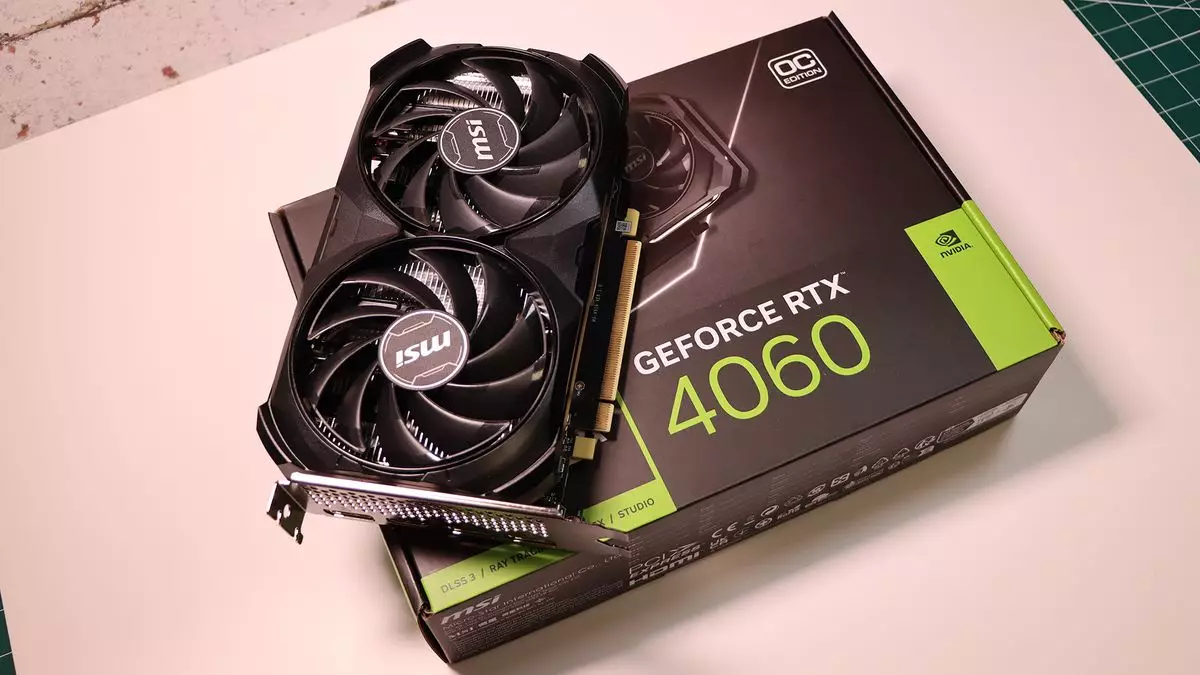The landscape of GPU usage within the gaming community is always shifting, influenced by market trends, technological advancements, and pricing strategies. The most recent results from the Steam hardware survey reveal a pertinent narrative surrounding the usage of Nvidia’s RTX 40-series graphics cards. An uptick in the adoption of budget-friendly options, particularly the RTX 4060 and RTX 4060 Ti, suggests a significant shift in user preferences as gamers take advantage of recent price drops. This article delves deeper into these trends, the implications for the gaming industry, and the potential impact of upcoming hardware releases.
Recent Trends in GPU Adoption
Analysis of the September Steam hardware survey indicates a notable rise in the popularity of Nvidia’s RTX 4060, which saw a 1.17% increase in user adoption, bringing its market share up to 4.58%. This substantial 34% growth from a previous 3.41% may seem modest numerically, but it signals a crucial moment in consumer behavior regarding budget graphics cards. Likewise, the RTX 4060 Ti also experienced a positive trend, with a 0.76% increase. The springs in these metrics suggest that users are opting for these mid-range GPUs, possibly spurred by declining prices that make them more accessible to a wider audience.
These changes can be attributed to a variety of factors, including ongoing sales and a general reduction in GPU prices, which many gamers have experienced recently. As we stand on the precipice of the next generation of graphics cards—namely, Nvidia’s RTX 50-series and AMD’s RX 8000-series—the timing appears favorable for consumers looking to either upgrade their systems or enter the market. The draw of lower prices—particularly with the RTX 4060 now falling below the $300 mark—offers an enticing option for gamers who previously found higher-priced GPUs out of reach.
An interesting aspect of the current statistics is the potential influence of the Chinese gaming market. The survey indicates a 1.54% increase in the usage of Simplified Chinese, hinting at a cultural and gaming shift that may be positively impacting the sales figures for Nvidia’s 4060 series. One can speculate that the recent launch of “Black Myth: Wukong,” a title that has garnered significant attention, may contribute to this increase as players upgrade to accommodate newer games.
This growth in user adoption of Nvidia’s hardware could also suggest a broader narrative within the gaming industry—one that interlinks cultural preferences and technological demands. With more Chinese gamers joining platforms like Steam, the potential for sustained growth in the GPU market increases, particularly as regional interest in PC gaming continues to expand.
Price Trends and Consumer Behavior
For years, hardware enthusiasts have lamented over the exorbitant prices of graphics cards, as markets grappled with supply shortages and inflated demand. However, as we move closer to the launch of next-gen GPUs, the landscape appears to be shifting. With prices for the RTX 40-series decreasing, the chance for casual and competitive gamers to consider upgrades has become feasible. This price decline coincides with the anticipation surrounding new hardware releases, suggesting that consumers may be strategically waiting to make decisions based on future trends.
Moreover, the survey results signal a potential shift in consumer behavior that reflects a pragmatic approach to purchasing technology. Gamers who previously opted for higher-end models may now be considering whether a mid-range option can satisfy their performance needs, particularly with the promise of next-gen improvements looming on the horizon.
While the GPU market is recovering and adapting, it is also essential to consider the operating systems driving these advancements. The latest hardware survey shows a slight uptick in Windows 10 usage, rising by 1.57% alongside a corresponding decline in Windows 11, which fell by 1.48%. This oscillation can be interpreted as a moment of reflection for gamers weighing the benefits of newer systems against the tried-and-true methods of older setups. Such dynamics may further shape hardware adoption rates, especially as technologies continue to evolve.
The Steam hardware survey results illuminate a multifaceted perspective on GPU usage trends, influenced by price drops, regional markets, and consumer behavior shifts. As the industry anticipates the introduction of next-gen graphics cards, it will be fascinating to observe how these trends evolve and respond to the changing demands of the gaming community. The time to reevaluate platforms and investment in gaming technology has never been more critical as we navigate this exhilarating landscape.

